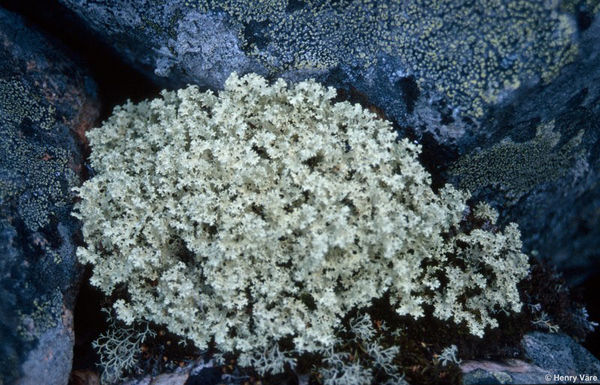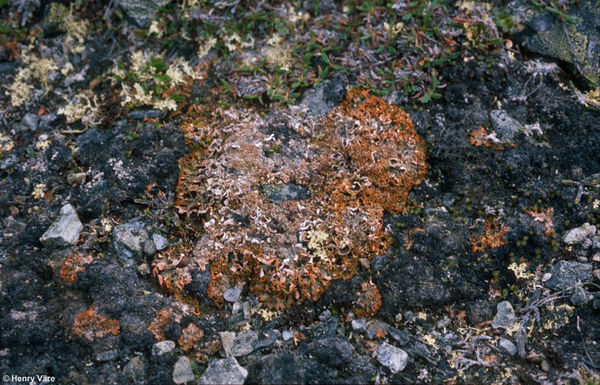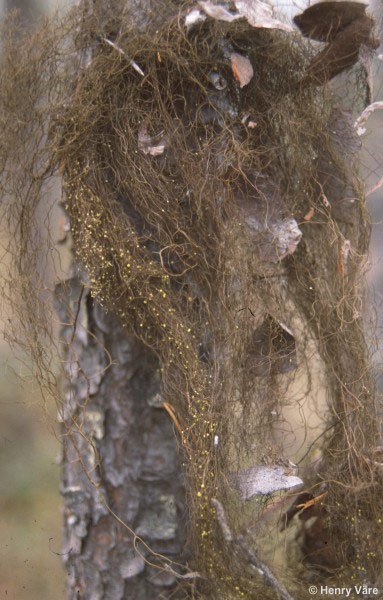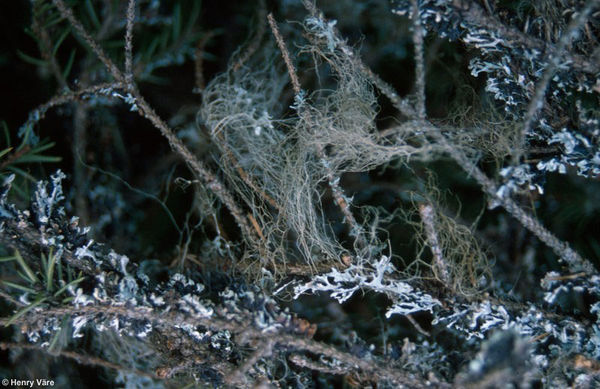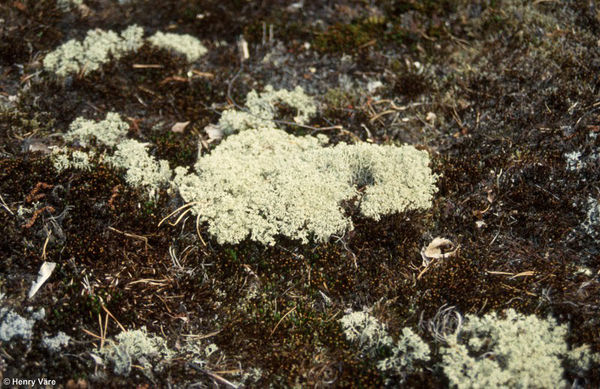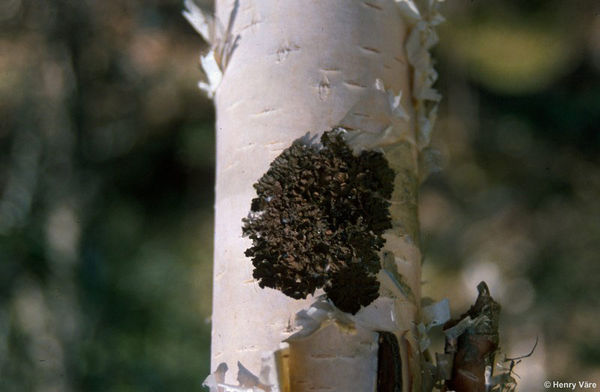Jäkälät
Jäkälät
Lichens
A lichen is a symbiotic organism formed by an algae and a fungi. Fungi provide external shelter to algae, which live between the cells inside them. Algae and sometimes also cyanobacteria are responsible for photosynthesis flora, since fungi are unable to photosynthesize. It is an ecologically oblicate and stable mutualism, benefiting both partners. Taxonomically, lichens are included in the fungal kingdom.
It has been estimated that the number of lichen species in the world is between 17,000 and 20,000. In Finland there are about 1600 species, of which about 1200 are small crustaceous species, so-called microlichens. These are extremely common on rocks, bark and bare soil. The number of lichens in northern Fennoscandia is estimated to be about 1000-1200, of which about 250 are macrolichens. Important genera include Alectoria, Bryoria, Cetraria, Cladina, Cladonia, Evernia, Nephroma, Parmelia, Solorina, Sphaerophorus, Stereocaulon, Usnea and Xanthoria.
Lichens are very characteristics of Northern circumpolar boreal - Arctic oligotrophic ecosystems. Lichen woodlands are very extensive, and conifers support epiphytic, hanging species of the Alcetroria, Bryoria and Usnea genera.
In Fennoscandia, lichens exceptionally dominate the ground vegetation in pine and birch forest, whereas in northern Asia lichens are typical of larch woodlands and in North America of spruce woodlands. In Fennoscandia the most typical species in the ground layer flora are reindeer lichens and cup lichens of the Cladina and Cladonia genera respectively. These two genera are a very important source of food for reindeer herding. Reindeer also feed on the above mentioned epiphytic species, and especially several Bryoria species are important in this respect. Reindeer are particularly dependent on lichens in winter, especially during last part of that season.
Boreal forests are typical fire ecosystems, and reindeer lichens dominate the forest at their climax stage. After a fire, the succession starts again, and crustaceous lichens cover the ground within three to ten years. This is followed by a cup lichens stage ten to thirty years after the fire, dominated by species of the Cladonia and Stereocaulon genera.
At the climax stage 80 years after the fire, Cladonia stellaris dominate the ground. A similar succession also follows forest clearing and the heavy grazing of pastures. Certain lichen species are excellent ecological indicators. For example, Parmeliopsis ambiqua grows only below the average snow cover and Melanelia olivacea above it.
Lichens are also excellent indicators of air pollution, which in Fennoscandia is massive especially in the Kola Peninsula, from where it also affects pastures in other countries like Norway. Lichens are very sensitive to air pollution, and disappear from polluted sites.
